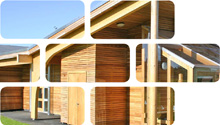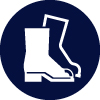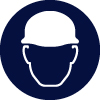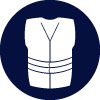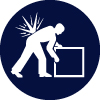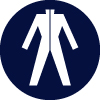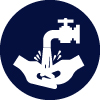
Glulam Wood 17 02 01
Glulam (glued laminated timber) is a laminated product using multiple layers of dimensional timbers from second- and third-growth softwood or hardwood species with durable and moisture-resistant structural adhesives. Glulam is manufactured in various sizes, thicknesses, quality and finish depending on the architectural design and engineering specification required. The manufacture of glulam allows timber to be used for much longer spans, heavier loads, and curved shapes than traditional large dimensional timbers. Glulam is commonly marketed as a sustainable and renewable product that has a low carbon impact, but with versatility and strength to exceed that of large timbers, steel or concrete.
Usage & Probable Locations
Glulam has many uses in construction and furniture. In construction it is used for vertical columns, structural beams, frames, rafters and trusses, whereas in furniture it is used for framing. It has special qualities in strength and beauty, where the laminating process can create a range of curves and twists to the final product. Glulam frames, columns and beams will transfer structural load to a designed point. Glulam is increasingly found in modern buildings including schools, offices, sports structures, bridges, arches, domes, churches, shopping centres, specialist industrial buildings and concert halls.
Personal Protective Equipment
PPE requirements indicated are for guidance purposes only. DRIDS has identified the PPE that is mandatory on all demolition projects and ones that may be required subject to site specific Risk Assessment & Method Statement (RAMS). Hover over the icon to determine the types of PPE required for the removal of this material.
Removal, Segregation & Storage
Depending on the particular use of a glulam product, will determine how it is removed, segregated and stored. Glulam timbers that are in good condition will have a reclamation or reuse value. They should be segregated and stored flat on a suitably sized pallet or on timber skids, preferably inside a building or covered with plastic or tarpaulin sheets to keep them dry. They should also be stored away from plant movements to prevent splash damage or breakage. Glulam timbers not destined for reuse should be stored in a timber only skip for subsequent recycling or recovery.
Tools
Fixtures, Fittings & Connections
Glulam timbers and frames are traditionally fixed in place with nuts-and-bolts, expansion bolts, pins, nails, dowels, plates, metal hangers, coach screws, screws or adhesive. Furniture may be free-standing, but will be connected to materials, linen and foams depending on the furnishing requirements.
Health & Safety
Subject to task-specific Risk Assessment & Method Statement (RAMS). Use correct protective equipment for removing fixings, especially bolts, pins, plates, hangers and screws. Be aware that columns, beams and frames can exert very large loads that should be fully understood before deconstruction or disassembly. Wear gloves when handling timbers with damaged edges, coated in paints or adhesives to prevent irritation, cuts and splinters. Wear eye protection when removing nails and screws with a crowbar, hammer or nailbar.

